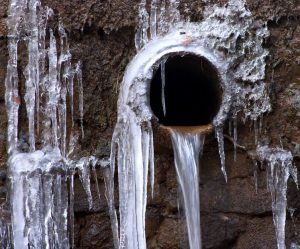How to Prevent Frozen Pipes
When cold weather arrives in many regions, it ushers in a celebratory time of year. Seasonal décor is carefully chosen to create just the right backdrop for indoor and outdoor festivities. Frozen pipes are not on the homeowner’s list of must-have items to complete a winter-themed setting. Nothing puts a damper on things like the flooding and walls that is caused by frozen pipe bursting. Such a disaster is both costly and unpleasant, yet it is preventable with a little advance preparation.
Why Pipes Burst

The unique molecular structure of water causes it to expand as it cools and changes from its liquid state into a solid. According to Fletchers, “when water expands inside a pipe, it can have a major impact on your home and yard. The expansion puts great pressure on both metal and plastic pipes, and no matter the strength of the pipe it can break or crack. The last thing any homeowner wants is a flood, so be extra aware of pipes exposed to severe cold or in unheated interior areas including outdoor hose bibs, swimming pool, and hot tub supply lines, water sprinkler lines, pipes in basements, attics and garages.”
Protect Exposed Pipes and Hoses
It is important that you drain any water that remains in the supply lines for outdoor sprinklers, pools and hot tubs. Check the manufacturer’s manual for instructions to ensure that this is done correctly. This can be done in conjunction with draining and storing outdoor water hoses. Inspect all water supply pipes and lines that are located in unheated areas such as in the garage, underneath sink cabinets, and in the basement or attic, adding insulation for protection against the colder temperature. Uninsulated pipes that run along exterior walls are particularly vulnerable to freezing and require insulation as well.
Prevent Pipes From Freezing

When freezing temperatures are expected, additional precautions can save the homeowner from the nightmare of a flooded home or lawn. Allow cold water to trickle from faucets that are supplied by exposed pipes. Open cabinet doors in baths and kitchens to allow heated air to enter those spaces, but be sure to store any harmful substances out of the reach of children and pets. Keeping garage doors closed is one way to maintain the proper temperature for supply lines that may be located there. It is also recommended that you keep the thermostat set at a temperature of at least 55° F, even when you are not at home.
Home is intended to be a safe place – a refuge from the stresses of life. But when your home becomes the source of that stress, you need to move fast to correct the issue. And prevention is truly the best medicine when it comes to home maintenance.